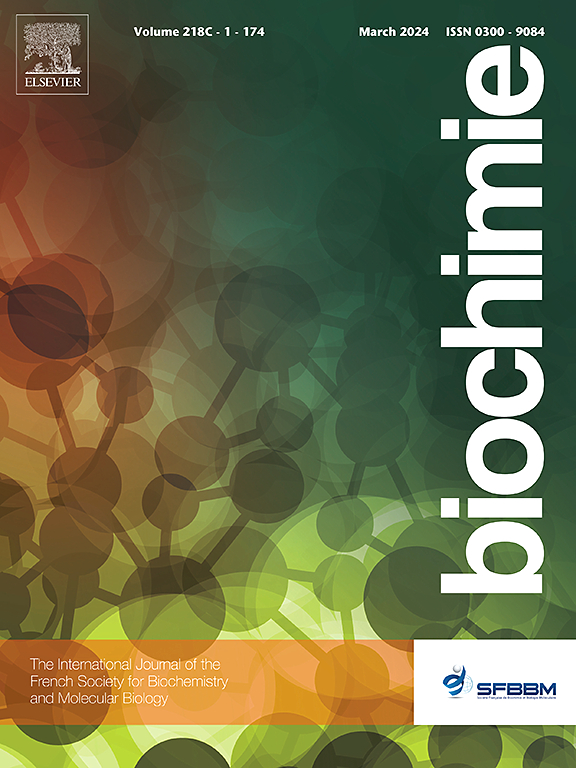Testis-specific RNA methyltransferase NSUN7 contains a re-arranged catalytic site
IF 3
3区 生物学
Q2 BIOCHEMISTRY & MOLECULAR BIOLOGY
引用次数: 0
Abstract
The RNA methyltransferase NSUN7 has been reported to be involved in the regulation of longitudinal columns positioning in sperm flagella, but its catalytic mechanism remains unclear. In this study, we investigated the functional role of NSUN7's methylation in the longitudinal column positioning by generating a mouse strain with a substitution of the putative catalytic cysteine in motif IV to alanine (Nsun7C382A). Contrary to predictions based on the typical reaction mechanism of NOP2/Sun family methyltransferases, Nsun7C382A mice did not exhibit any phenotypical characteristics of knockouts and had normal fertility, sperm motility, and longitudinal column positioning, similar to wild-type mice. Structural modelling suggests that NSUN7 possesses an unusual catalytic site composition, including three highly conserved cysteines from motifs IV, VI and VIII. The distance between the canonical catalytic cysteines in motifs IV and VI is significantly greater than in related methyltransferases, while a cysteine from motif VIII is positioned closer to motif VI. These findings allow us to assume that NSUN7 may have an essential function in the spermatogenesis of mice independent on its methyltransferase activity.

睾丸特异性RNA甲基转移酶NSUN7包含一个重排的催化位点。
RNA甲基转移酶NSUN7参与了精子鞭毛纵柱定位的调控,但其催化机制尚不清楚。在这项研究中,我们研究了NSUN7甲基化在纵向柱定位中的功能作用,通过产生一个小鼠品系,将基序IV中假定的催化半胱氨酸替换为丙氨酸(Nsun7C382A)。与基于NOP2/Sun家族甲基转移酶典型反应机制的预测相反,Nsun7C382A小鼠没有表现出敲除的任何表型特征,并且具有与野生型小鼠相似的正常生育能力、精子活力和纵向柱定位。结构建模表明,NSUN7具有不同寻常的催化位点组成,包括来自基序IV、VI和VIII的三个高度保守的半胱氨酸。基序IV和基序VI的典型催化半胱氨酸之间的距离明显大于相关的甲基转移酶,而基序VIII的半胱氨酸更靠近基序VI。这些发现使我们假设NSUN7可能在小鼠精子发生中具有独立于甲基转移酶活性的重要功能。
本文章由计算机程序翻译,如有差异,请以英文原文为准。
求助全文
约1分钟内获得全文
求助全文
来源期刊

Biochimie
生物-生化与分子生物学
CiteScore
7.20
自引率
2.60%
发文量
219
审稿时长
40 days
期刊介绍:
Biochimie publishes original research articles, short communications, review articles, graphical reviews, mini-reviews, and hypotheses in the broad areas of biology, including biochemistry, enzymology, molecular and cell biology, metabolic regulation, genetics, immunology, microbiology, structural biology, genomics, proteomics, and molecular mechanisms of disease. Biochimie publishes exclusively in English.
Articles are subject to peer review, and must satisfy the requirements of originality, high scientific integrity and general interest to a broad range of readers. Submissions that are judged to be of sound scientific and technical quality but do not fully satisfy the requirements for publication in Biochimie may benefit from a transfer service to a more suitable journal within the same subject area.
 求助内容:
求助内容: 应助结果提醒方式:
应助结果提醒方式:


